Recent Posts
Conquering Kitchen Mold: Effective Prevention and Elimination Techniques
10/24/2023 (Permalink)
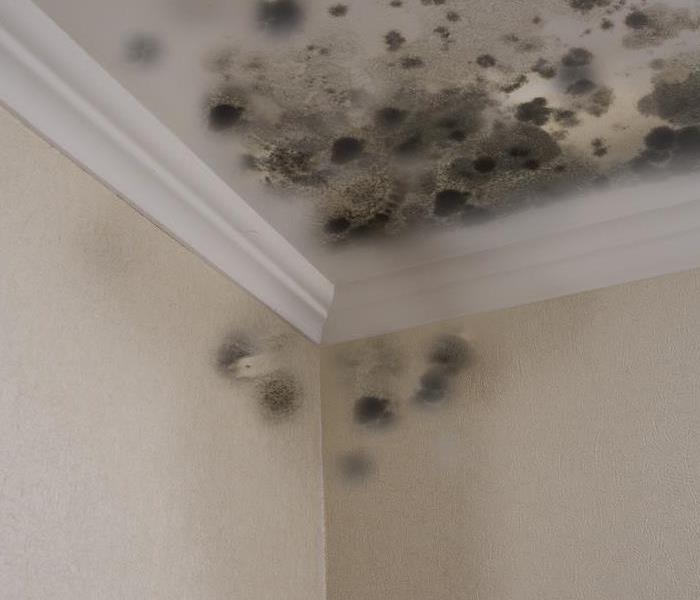 Preventing and eliminating kitchen mold is essential for having a clean cooking space.
Preventing and eliminating kitchen mold is essential for having a clean cooking space.
Dealing with mold in the kitchen can be a frustrating issue that many homeowners face. Mold growth can occur due to factors such as excess moisture, poor ventilation, and food spills. In this blog, we will explore effective strategies to prevent and eliminate kitchen mold without focusing on health risks and concerns.
Excess Moisture
Kitchens are prone to excess moisture, especially near sinks, dishwashers, and cooking areas. This moisture can promote mold growth if not properly managed. To prevent mold, promptly clean up any spills or leaks and ensure that kitchen appliances are functioning properly. Wiping down surfaces, drying dishes thoroughly, and using exhaust fans or opening windows during cooking can also help reduce moisture levels.
Poor Ventilation
Inadequate ventilation in the kitchen can lead to trapped moisture and increased humidity, providing favorable conditions for mold growth. Using exhaust fans or range hoods while cooking can help remove excess moisture and improve airflow. Additionally, regularly cleaning or replacing filters in these systems is crucial to maintain their effectiveness.
Food Storage and Spills
Food spills and improper storage can contribute to kitchen mold. Cleaning up spills promptly and properly storing perishable foods can prevent mold growth. Regularly inspecting cabinets, pantry shelves, and refrigerator seals for any signs of moisture or mold is essential. Taking note of expiration dates and discarding expired or moldy food items will help maintain a clean and mold-free kitchen environment.
Effective Removal Strategies
If mold does appear in the kitchen, it is important to address it quickly and efficiently. Equipped with gloves and masks for protection, isolate the affected area and remove any mold-infested materials. Utilize appropriate cleaning solutions or mold-killing products to scrub affected surfaces thoroughly. Additionally, inspect and repair any areas of the kitchen that may contribute to recurring mold growth.
Battling kitchen mold can be a frustrating and persistent problem for homeowners. However, with the implementation of effective prevention and elimination techniques, you can regain control of your kitchen and maintain a clean and healthy environment. By being vigilant in managing moisture, improving ventilation, practicing proper food storage and cleanup, and promptly addressing any signs of mold, you can prevent the growth of kitchen mold and ensure a safe and enjoyable cooking space for yourself and your family. Don't let kitchen mold take control – take proactive steps to conquer it today!
Preventing and eliminating kitchen mold is essential for maintaining a clean and hygienic cooking space. By addressing excess moisture, improving ventilation, and practicing proper food storage and spill cleanup, you can significantly reduce the risk of mold growth. Prompt removal of any mold and regular maintenance will help keep your kitchen mold-free and enjoyable to use.
Maintenance Tips to Prevent Water Damage
10/16/2023 (Permalink)
 Water damage restoration is a major undertaking that requires time, effort, and investment.
Water damage restoration is a major undertaking that requires time, effort, and investment.
Water damage restoration is a major undertaking that requires time, effort, and investment. Once the restoration process is complete and your home is restored to its pre-damaged condition, it's essential to implement post-restoration home maintenance to prevent future damage. In this blog post, we will discuss crucial tips and practices to maintain your home's integrity and safeguard against potential water damage in the future.
Regular Roof Inspections
The roof is your home's first line of defense against water intrusion. Conduct regular inspections to identify any damaged or missing shingles, cracks in the roof, or areas prone to leaks. Addressing these issues promptly will help prevent water from seeping into your home during rainstorms or melting snow. Consider hiring a professional to conduct a thorough roof inspection annually or after severe weather events.
Maintain Gutters and Downspouts
Clogged gutters and downspouts can lead to water backup and overflow, causing water damage to your home's foundation, siding, and basement. Regularly clean out debris from gutters and ensure downspouts are properly directed away from the foundation. Additionally, consider installing gutter guards to minimize debris buildup and make maintenance easier.
Check for Plumbing Leaks
Undetected plumbing leaks can cause significant water damage over time. Periodically inspect all visible pipes, faucets, and plumbing fixtures for signs of leaks, such as water stains, mold growth, or drips. Address any leaks immediately by repairing or replacing the affected components. Consider installing leak detection devices that can provide early warnings of potential leaks or flooding.
Test Sump Pump Functionality
If your home is equipped with a sump pump, it's crucial to test its functionality regularly. Pour water into the sump pit to ensure the pump activates and effectively pumps out the water. In regions prone to heavy rainfall or flooding, consider installing a backup power source, such as a battery or generator, to ensure the sump pump continues working during power outages.
Keep an Eye on Moisture Levels
Excess moisture can lead to mold growth and damage to your home's structure and belongings. Regularly monitor moisture levels in areas prone to dampness, such as basements, crawl spaces, and bathrooms. Use dehumidifiers to control humidity levels and ensure proper ventilation in these areas. Additionally, promptly address any signs of moisture intrusion, such as damp walls, musty odors, or condensation on windows.
Maintain Landscaping and Grading
Proper landscaping and grading can help redirect water away from your home, reducing the risk of water intrusion. Ensure that the ground slopes away from the foundation, preventing water from pooling near the building. Regularly clean out debris from yard drains and make sure they are functioning effectively.
Review and Update Home Insurance Coverage
Regularly review your home insurance policy to ensure it provides adequate coverage for water damage. Consider adding endorsements or riders that specifically cover water damage and its aftermath, such as mold remediation. Property value, improvements, and the addition of valuable belongings may require adjustments to your insurance coverage.
Post-restoration home maintenance is crucial to prevent future water damage and protect your home from potential risks. By conducting regular roof inspections, maintaining gutters and downspouts, checking for plumbing leaks, testing sump pump functionality, monitoring moisture levels, maintaining landscaping and grading, and reviewing and updating your home insurance coverage, you can safeguard your home against water damage and ensure its long-term integrity. Remember, proactive maintenance is key to preventing costly and disruptive water damage in the future.
How to Protect Your Roof from Heavy Rain and Wind
9/12/2023 (Permalink)
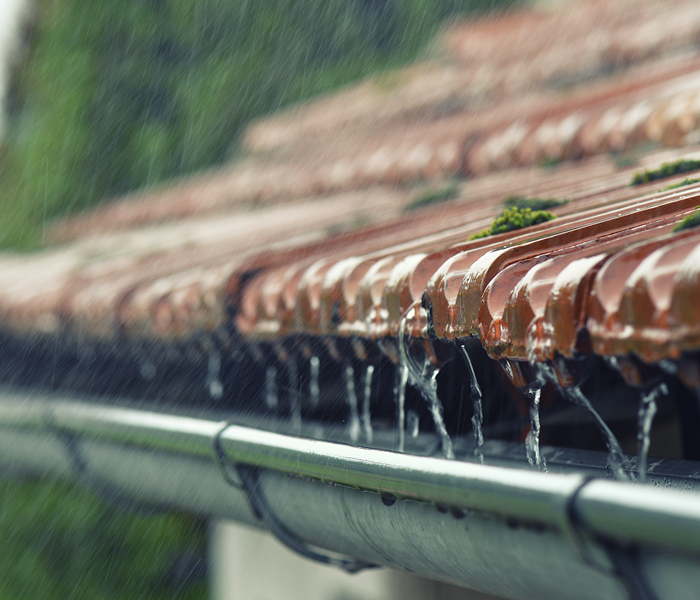 Maintain gutters and downspouts to keep water from damaging your gutters and cause flooding
Maintain gutters and downspouts to keep water from damaging your gutters and cause flooding
Living in the Northwest region means encountering its fair share of heavy rain and strong winds. These weather conditions can pose significant risks to your home, especially your roof. To ensure the safety and longevity of your roof, it's essential to take proactive measures to protect it from the elements. In this blog post, we will explore some effective ways to safeguard your roof from heavy rain and wind in the Northwest.
Regular Roof Inspections
Initiating regular roof inspections is crucial in identifying any existing vulnerabilities or potential issues. Engage a professional roofing contractor to inspect your roof at least once a year. They can check for loose or missing shingles, damaged flashing, or compromised areas that could lead to leaks or wind damage. Early detection of problems allows for timely repairs or preventive measures, preventing further damage during heavy rain or windstorms.
Properly functioning gutters and downspouts play a vital role in directing rainwater away from your roof and foundation. Regularly clean your gutters and remove any debris, such as leaves or twigs, that may obstruct the flow of water. Ensure that the downspouts are clear and extend at least five feet away from your home to prevent water from pooling near the foundation. This helps prevent water damage and reduces the risks of leaks or roof deterioration.
Reinforce Flashing and Sealants
Flashing, which consists of metal strips installed around roof edges and penetrations, helps prevent water from seeping into vulnerable areas. Strong winds and heavy rain can dislodge or damage flashing, compromising its effectiveness. Check the condition of the flashing and sealants around chimneys, vents, skylights, and any other areas where the roof meets protrusions. Replace worn-out flashing and apply appropriate sealants to safeguard against water intrusion.
Trim Overhanging Branches
In the Northwest, trees are abundant and can provide aesthetic appeal and shade. However, overhanging branches can pose a risk to your roof during heavy rain and wind. Trim any branches that are close to or hanging over your roof. Falling branches can cause significant damage, puncturing or dislodging shingles and potentially leading to leaks. Regular tree maintenance will help reduce the risk of damage during storms.
Strengthen Roof Materials
When replacing or installing a new roof, consider using durable, wind-resistant materials that are suitable for the Northwest's weather conditions. Opt for roofing materials that have a high wind rating, such as asphalt shingles with a higher wind resistance rating or metal roofing. These materials are designed to withstand strong winds and heavy rain, providing an extra layer of protection for your home.
Ensuring that your roof's structure is strong and well-maintained is essential for withstanding heavy rain and wind. Collaborate with a professional contractor to assess the structural integrity of your roof. They will evaluate the roof trusses, rafters, and other supporting components to identify any weaknesses. Reinforcing weak areas can help prevent roof collapse or significant damage during severe storms.
Protecting your roof from heavy rain and wind in the Northwest requires proactive measures and regular maintenance. Regular inspections, maintaining gutters and downspouts, reinforcing flashing and sealants, trimming overhanging branches, using wind-resistant materials, and strengthening the roof structure are all essential steps to safeguard your roof. By taking these precautions, you can enhance the durability and longevity of your roof and minimize the risks associated with heavy rain and windstorms.
How to Put Out a Grease Fire: Essential Steps to Ensure Your Safety
8/10/2023 (Permalink)
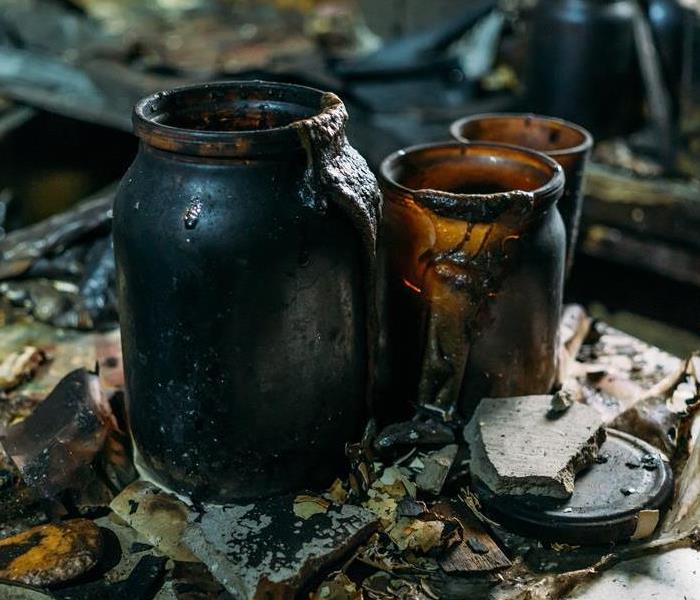 Safety first! Safety is top priority when it comes to grease fires.
Safety first! Safety is top priority when it comes to grease fires.
A grease fire can quickly escalate into a dangerous situation, posing a significant risk to life and property. It is crucial to know how to safely and effectively extinguish a grease fire to prevent it from spreading or causing further harm. In this blog post, we will guide you through the essential steps to put out a grease fire and ensure your safety.
Stay Calm and Act Quickly
The most important thing when dealing with a grease fire is to remain calm and act swiftly. Time is of the essence, and a fast response can help prevent the fire from intensifying. Avoid panicking or making impulsive decisions that could escalate the situation.
If it is safe to do so, immediately turn off the heat source. This could be a stovetop burner or an oven. Removing the heat will help stop the fire from spreading and minimize the fuel feeding the flames.
Smother the Flames
The next step is to smother the flames to restrict the oxygen supply. You can use a metal lid or a baking sheet to cover the burning pan. Make sure to use oven mitts or potholders to protect your hands while handling the lid. If it is safe, gently slide the lid over the pan, covering it entirely. Avoid lifting the lid to check if the fire is out; this can reignite the flames.
If you don't have a lid or it's not safe to use, you can try using baking soda or salt to extinguish the flames. Grab a generous amount of baking soda or salt and carefully sprinkle it onto the fire. These substances can help smother the fire by releasing carbon dioxide, which displaces oxygen. However, it is crucial to remember that water, flour, or other substances should never be used to extinguish a grease fire as they will only worsen the situation.
Use a Fire Extinguisher
If the grease fire continues to grow despite your efforts, it's time to utilize a fire extinguisher. Ensure that you have a Class B or multipurpose fire extinguisher suitable for grease fires. Remember the acronym "PASS" - Pull the pin, Aim at the base of the fire, Squeeze the handle, and Sweep the extinguisher side to side. Familiarize yourself with the instructions and proper usage of a fire extinguisher beforehand.
Water should never be used to extinguish a grease fire. Pouring water onto a grease fire can cause the burning oil to splatter, spreading the flames and increasing the risk of injury. Water can also cause an explosive reaction with hot oil, releasing steam and potentially causing severe burns.
Call for Emergency Assistance
If you are unable to extinguish the grease fire within a few seconds or if it continues to spread, do not hesitate to call emergency services. Inform them about the situation and provide your location. It is always better to have professional firefighters handle a fire to ensure that it does not escalate beyond control.
If the grease fire becomes uncontrollable, it is essential to prioritize your safety. If you are unable to extinguish the fire or if you are instructed to evacuate by emergency services, leave the area immediately. Alert others in the vicinity, close any doors behind you to contain the fire, and take the nearest and safest exit. Remember to stay low if there is smoke, cover your mouth with a cloth, and avoid inhaling toxic fumes.
Prevent future fires
Prevention is the key to avoiding grease fires altogether. Here are a few tips to help prevent future incidents:
- Never leave cooking unattended, especially when using hot oil or grease.
- Maintain a clean cooking area, removing any oil or grease spills promptly.
- Regularly inspect and clean cooking appliances, such as stovetops and ovens.
- Use caution when heating grease or oil, and never exceed the recommended temperature.
- Keep a fire extinguisher readily available in or near the kitchen, specifically designed for grease fires.
- Educate yourself and your family members on fire safety measures to ensure everyone knows how to respond in an emergency.
Remember, safety must always be the top priority when dealing with a grease fire. By following these essential steps and practicing preventative measures, you can effectively extinguish a grease fire and protect yourself, your loved ones, and your property. Stay calm, act quickly, and be prepared to handle these situations with confidence.
Storm-Proofing Your Business: Essential Steps to Prepare Your Company for Severe Weather
8/10/2023 (Permalink)
 Preparing your business incase of a storm to ensure your prepared for anything.
Preparing your business incase of a storm to ensure your prepared for anything.
As a business owner or manager, it's vital to proactively prepare your company for the potential impact of storms and severe weather. By implementing effective strategies and safety measures, you can minimize disruptions, protect your employees and assets, and ensure a smoother recovery process. In this blog post, we will guide you through essential steps to prepare your company for a storm, enabling you to safeguard your business and maintain continuity during challenging times.
Stay Informed and Develop an Emergency Plan
- Monitor Weather Updates: Stay tuned to reliable weather sources to receive timely information about approaching storms and severe weather conditions.
- Establish an Emergency Response Team: Designate a team responsible for overseeing emergency preparedness efforts, including communication, evacuation procedures, and resource allocation.
- Develop an Emergency Plan: Create a comprehensive plan outlining procedures for employee safety, facility protection, and business continuity. Ensure clear communication channels and designated roles for employees during emergencies.
Assess and Secure Your Physical Environment
- Conduct a Risk Assessment: Identify potential vulnerabilities in your premises, such as weak structures, windows, or roofs, and take necessary steps to reinforce them.
- Clear Surrounding Areas: Remove or secure loose objects, equipment, or debris that could become hazardous in high winds. Trim trees and branches near your building to prevent damage from falling limbs.
- Protect Sensitive Equipment: Safeguard critical equipment and electronics by placing them in secure, elevated areas or investing in protective coverings.
Back Up Data and Establish Remote Access
- Regularly Backup Data: Implement a robust data backup system to ensure critical files and information are protected. Store backups in secure off-site locations or use cloud-based services.
- Enable Remote Access: Equip employees with the necessary tools and technology to work remotely if the office becomes inaccessible. Establish secure remote access protocols for business operations to continue during and after the storm.
Establish Communication Protocols
Start by developing an Employee Communication Plan. Establish reliable channels to communicate with employees during a storm, including text messages, email, phone calls, or a designated emergency hotline. Maintain Contact Information. Keep an updated list of employee contact details and emergency contact numbers.
Communicate with Clients and Customers. Inform your clients, customers, and suppliers about your company's storm preparedness plan and any potential disruptions to services.
Review Insurance Coverage
- Consult with an Insurance Professional: Assess your business insurance coverage and ensure it adequately protects against storm-related risks and damages.
- Document and Inventory Assets: Keep a detailed inventory of your company's assets, including equipment, furniture, and supplies, with supporting documentation such as photographs and receipts. This will facilitate the claims process in case of storm-related damages.
Preparing your company for a storm requires proactive planning, effective communication, and securing your physical environment. By staying informed, developing an emergency plan, securing your premises, backing up data, establishing communication protocols, and reviewing insurance coverage, you can mitigate risks and ensure the resilience of your business.
Creating an effective Office Escape Plan. A Step-by-Step Plan
4/5/2023 (Permalink)
 Having an office fire escape plan is an important part of a business
Having an office fire escape plan is an important part of a business
An office fire escape plan is an important part of any business, but it can be difficult to create one that's effective. This guide will walk you through the process of creating a plan for your own office, so that everyone knows what to do in case of an emergency.
The first step is to determine what type of building you work in and how many people are likely to be present when an emergency occurs.
If you work in an industrial warehouse or factory space with few employees on site at any given time, then there may only need to be one exit route from each floor or wing of your building (and perhaps even fewer).
On the other hand if there are hundreds or thousands of workers coming into work every day who might all need access through one main entrance point (such as an airport), then it's important that there are multiple ways out--even if they're not all accessible at once due simply because there aren't enough exits available!
Identify Potential Fire Hazards
Identify potential fire hazards in your office. This means inspecting the office for items that could cause a fire or make it difficult to escape, such as overloaded electrical outlets, frayed wires and combustible materials.
Create an Emergency Evacuation Plan
Designate an evacuation route.
Assign roles and responsibilities to key employees, such as the person who will be responsible for evacuating your pets or children from the building. If you have a large office building, consider having someone stationed at each floor's exit to direct people out of the building.
Provide fire safety training to all employees so they know what to do in case of emergency and how best to help others escape safely.
In case of a fire, it's important to know who to call and how to reach them. Post the phone number for your local fire department and other emergency services on your office wall or bulletin board, along with any other relevant details (e.g., whether they're open 24/7).
If you have an evacuation plan in place, include instructions on how employees should exit the building and where they should meet up once they're outside of it. This information should also be posted somewhere visible so everyone knows what they're supposed to do in case of an emergency situation--and where they need go afterward!
Test Your Plan
Conduct a fire drill to test the evacuation plan and make sure everyone is aware of the procedures. Review your plan with new employees, interns and students as they arrive on campus.
Install Smoke Detectors and Fire Extinguishers
Install smoke detectors and fire extinguishers in the office. Check them regularly to make sure they are in working order.
When you're working in an office, it's easy to forget how much flammable material is around. You might have paint, cleaning supplies and other items that are highly combustible. These can be stored safely by storing them away from heat sources and keeping them in approved containers. This will prevent fires from starting accidentally and make it easier for everyone if there is an emergency evacuation needed. As you can see, creating an office fire escape plan is not as hard as it may seem. It only takes a few minutes and can save lives in the event of a fire.
If you have any questions or concerns about how to create your own office fire escape plan, please contact us anytime, 24/7. We are here to help!
Protecting Your Property: Tips for Preventing Water Damage During Construction
3/27/2023 (Permalink)
 Tips for preventing Water Damage During Construction
Tips for preventing Water Damage During Construction
If you're having a home built or renovated, chances are your contractor has been talking to you about what to expect during the construction process. While most contractors will take great pains to protect your property from water damage, there are still some things you can do yourself and your family can do together to keep the home safe and sound during construction.
Take a proactive approach to construction water loss
In the construction industry, it is important to take a proactive approach to water loss. When you work with a contractor who understands how important it is for you and your business, they will make sure that they do everything they can to prevent water damage during construction.
Taking a proactive approach means working with contractors who have experience in this area. They know what types of materials work best and how long they last so that when something happens like a pipe bursts or there's an unexpected leak in your roofing system, the damage has been minimized as much as possible.
If you don't take this kind of approach, then when something does go wrong, it could cause major problems for both yourself and your business!
Fluctuations in temperature and humidity
You'll know it's happened when you notice leaky spots or uneven surfaces in your home. Fluctuations in temperature and humidity can cause your home's walls, floors and ceiling to move out of place. This is called "settling."
It's not always possible to prevent settling with simple measures like propping up furniture and avoiding heavy objects on shelves. If you live in an older home, there may be no way around it. If this isn't an option for whatever reason, maybe because the house is brand new, then here are some ways that contractors can help keep things level.
If you're concerned about water damage during construction, you may want to keep an eye on the weather forecast so that you know when to keep construction crews indoors.
HVAC and Proper Ventilation
Construction water loss can also come in the form of dirt, debris and dust getting into the air conditioning system. Your HVAC contractor can help you prevent this kind of problem by installing a proper ventilation system for your home during construction.
A proper ventilation system should include an exhaust fan that is capable of removing air from every room in your home and blowing it outside through an opening near where it exits the house.
Intake vents near windows or doors where fresh air enters the house, which allow you to control what types of pollutants enter your home.
Water damage in your home or business is among the most common problems faced by property owners, especially during construction. This is because water loss during construction can be quite severe and costly if not prevented in time. Preventing water damage during construction involves taking a proactive approach towards dealing with this problem. Hiring a professional when your property suffers from damage during construction.
5 Benefits of Regular House Plumbing Inspections
2/12/2023 (Permalink)
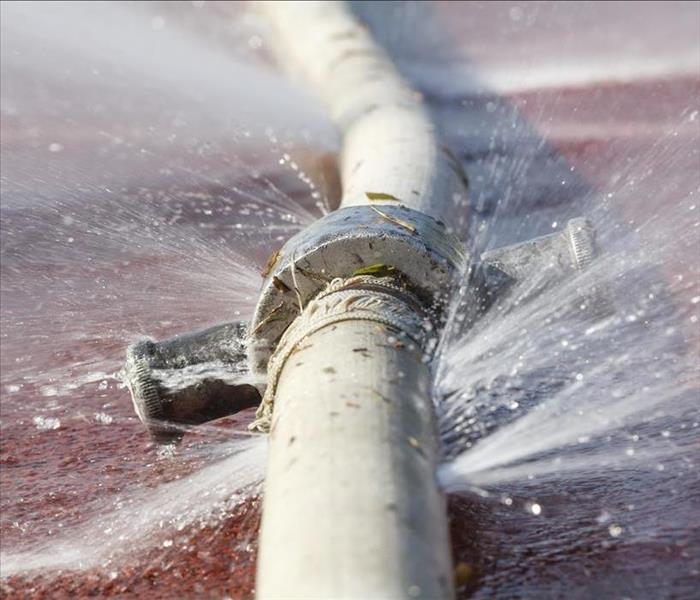 Having regular house plumbing inspections is a great way to manage and maintain your home or business.
Having regular house plumbing inspections is a great way to manage and maintain your home or business.
A plumbing inspection is a great way to make sure your house is running smoothly. It can help you avoid costly repairs and major issues down the line. It also helps to ensure that your home or business stays in great condition and performs at its best. Here are some of the top benefits of regular plumbing maintenance.
Saves Money in the Long Run
Regular plumbing inspections can help you save money in the long run by reducing the likelihood of major plumbing issues, reducing the need for emergency plumbing services and expensive repairs, and reducing the need for replacement parts.
As your home's plumbing system ages and wears down, it becomes more susceptible to damage from wear and tear as well. Regular inspections can identify these problems before they become too serious; this saves you time and money on costly repairs down the line.
Improved Water Pressure
The quality of your shower, dishwasher, washing machine, and toilet depends on water pressure. Without it, you may feel like the water trickles rather than pours when you turn on your faucets. Regular plumber inspections can improve your home’s plumbing so that it delivers the amount of pressure needed to meet all your household needs.
Similarly, when drains are slow to drain or don't drain at all—and toilets flush slowly—this means dirty water isn't being evacuated from the home as efficiently as possible. This leads to unnecessary waste that could clog up drains over time, which then requires professional help.
Improved Water Quality
Water quality is an important part of any home. In order to ensure that your water stays at its cleanest, regular house plumbing inspections are essential. A professional plumber will check for leaks in your pipes, identify potential problems before they arise, and provide maintenance advice so that you can keep up with the proper functioning of all aspects of your house plumbing system.
Prevents Major Issues Down The Line
The plumbing system in your home is a complex, interconnected system. If an issue develops in one part of the system, it can affect other parts of the system and cause problems throughout your property. For example, if an older water heater or drain clogs up and causes a major blockage in a pipe, this could lead to a sewage back-up into other areas of your house or business. If left untreated, this backup can cause structural damage that results in costly repairs. Regular inspections by experienced plumbers can help identify these issues before they become major problems that require extensive repairs or replacement work on your part.
Maintains Excellent Performance
Regular inspections of your plumbing system are an excellent way to prevent problems before they arise. These inspections will help keep your plumbing system in good working order, preventing leaks and burst pipes, and reducing the risk of flooding, water damage, mold growth, and health problems.
What’s Involved in an Inspection?
When you hire a professional plumber to inspect your home's plumbing, they will do a lot more than just look at what is going on. They will examine the following:
- the water pressure
- the supply lines
- the drains
- the toilets
- the faucets
- appliances such as your dishwasher, washing machine, and refrigerator
Regular Plumbing Inspections are Important.
Having regular house plumbing inspections is a great way to manage and maintain your home or business. We hope that we’ve convinced you to consider a plumbing inspection. If you do, then you’ll be glad that you did!
Water Mitigation vs. Water Damage Restoration
1/20/2023 (Permalink)
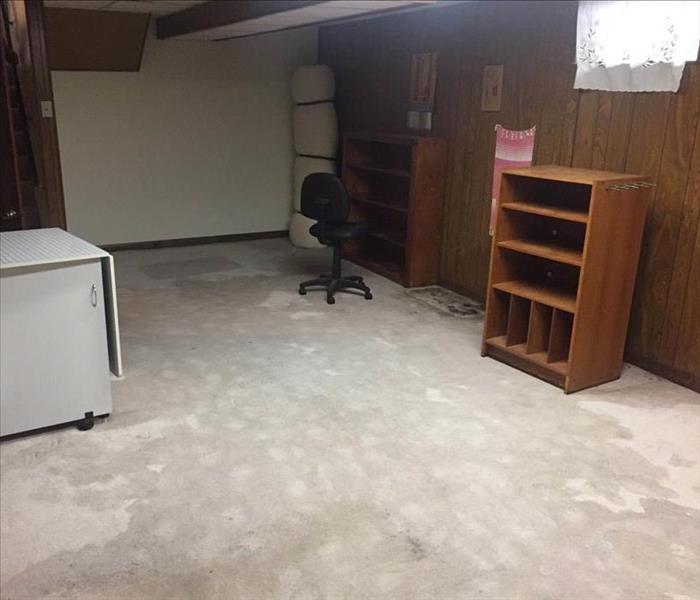 You will generally need both processes to get your home back to normal.
You will generally need both processes to get your home back to normal.
Water mitigation and water damage restoration are two common methods used by professionals to restore water damage. Many people confuse the two terms, but they are different and serve different purposes. Water mitigation focuses on drying and sanitizing the affected area, while water damage restoration puts the property back to its pre-incident state. Here we will break down the two concepts and show how they are both essential for recovering from a water damage event.
Water Mitigation
Water mitigation puts your property back to its pre-incident state by removing any standing water and drying out the structure. The goal of water mitigation is to prevent mold from growing once it has been removed from a building or home. This may involve drying out wet carpeting and floors with fans or dehumidifiers; removing soaked drywall; cleaning up mold growth caused by excess moisture; etcetera.
During water mitigation, the technicians will work to build a temporary fix to the cause of the water damage. This will ensure the water does not continue to flow into your home or business. It will also ensure that the technicians can focus on getting the water out of the structure in order to minimize the damage as much as possible.
Water Damage Restoration
Water damage restoration is the process of repairing structural and cosmetic damage to a property caused by water intrusion. This is a very common issue, as water damage can occur in any residential or commercial property, for a variety of reasons. Water damage restoration is an important process to follow after a water loss incident because it ensures that your property’s structure has been properly restored to its original condition.
Often, the water damage restoration process needs to start with water mitigation. This process clears the way for the actual restoration to take place. When both processes are complete you will notice that your Boulder, CO home looks better than before because we have returned everything back as close as possible to what it was before your loss occurred (or even better).
The water damage restoration process involves implementing a permanent fix for the cause of the water damage. Whether it's a broken pipe or a hole in the roof, this is the stage where SERVPRO of Lafayette/Louisville will get to work to make sure the cause of the water damage will no longer be a problem.
Mitigation and Restoration Go Hand-In-Hand
In conclusion, water mitigation and water damage restoration are two distinct processes that are used to address the issue of water damage in buildings. Water mitigation is the process of reducing the amount of water damage that occurs after a water damage event starts, typically through the use of techniques such as drying out the water with fans and dehumidifiers. Water damage restoration, on the other hand, is the process of repairing and restoring a building or structure that has already been damaged by water. You will generally need both processes to get your home back to normal.
Fire Protection Tips for Your Valuables
12/6/2022 (Permalink)
 If you’re serious about protecting your valuables from fire damage, you need to consider insurance.
If you’re serious about protecting your valuables from fire damage, you need to consider insurance.
Fire Protection Tips for Your Valuables
Fires are scary and can happen at any time without warning. Fire damage is also very costly. If your home has been damaged by fire, you may be wondering what you can do to prevent it from happening again. Thankfully, there are several things that both homeowners and renters can do to protect their valuables from the damaging effects of fire, and they don’t have to be expensive or difficult!
More Than Insurance
If you’re serious about protecting your valuables from fire damage, you need to consider insurance. You should make sure that your insurance policy is up-to-date and includes what it needs to in order to cover the right kinds of damages. If not, talk with your broker or agent about adding coverage for specific items or situations (like fires).
You should absolutely invest in proper insurance to protect your home and valuables from potential fire damage. If a fire does occur, it's easy to think that you're going to need everything replaced right away. But often, experts recommend waiting until the smoke clears before making any big purchases. Insurance provides you with time to think about what items are truly important for you, and which ones can wait until later on down the line when things have settled down a bit.
Fireproof Storage
A fireproof safe can keep your valuables safe from the heat of a fire. Fireproof storage containers are another option for protecting your belongings from the heat of a fire. These containers come in many shapes and sizes, so you can choose one that fits your needs best.
Fireproof storage cabinets are another great choice if you're looking for protection against extreme temperatures. They provide an extra layer of protection in case there's an emergency evacuation.
If storing small items is more important than hiding larger ones, then look into getting some fireproof boxes instead! These boxes are small enough not only to fit on shelves but also under beds and nightstands so they won't be too noticeable but still provide valuable protection against disasters like floods that might cause water damage inside homes due all sorts things like leaks coming through windows/doors etcetera.
Choosing a Security C.
Another way to help protect your valuables from a fire is to work with a reputable security company that can alert you when a fire breaks out in your home. When you’re looking for a security company, it’s important to choose one that offers a variety of services—including home alarm systems, fire alarms and sprinkler systems. Make sure the company has been in business for at least five years and has at least three references from satisfied customers. Ask about their history and reputation as well as their customer service record. If there are any complaints against them, ask how they handled them. Also ask what kind of warranty the system will come with (some companies offer lifetime warranties).
You can prevent most fire damage by taking precautions and insuring your valuables.
The best way to prevent fire damage is by taking the proper precautions. If you take the time to purchase a few basic fire-prevention tools, they’ll pay off in the long run and can help you save money on insurance costs. The most important thing is to know what your valuables are worth, so you can make informed decisions about how best to protect them from potential fires.
Fireproof safes are a good option for protecting valuables because they offer multiple layers of protection through heavy-duty steel construction, high-tech insulation materials, and some models even offer reinforced walls that won't melt when exposed to heat sources like fires or ovens. These safes also have burglar alarms installed within them so that if someone tries breaking into one while it's closed up tight then they'll trigger an alarm at once! You never have to worry about anyone stealing anything since no one else knows where they're hidden away except yourself -- plus there won't be any smoke damage either since all these items have been stored safely inside without being exposed directly outside elements such as sunlight
We want you to be prepared for all types of fires by reading this article and being aware of the steps that you can take to protect your valuables. Your home is one of your biggest investments and we want it to last as long as possible. So start planning now!






 24/7 Emergency Service
24/7 Emergency Service







